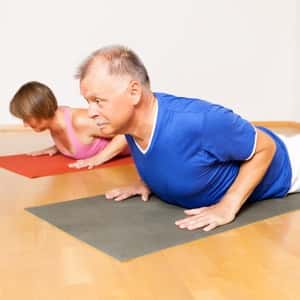
Lower back pain is common and debilitating. It is frequently treated with medications, but the American College of Physicians has issued new guidelines emphasizing nondrug approaches for acute lower back pain. Will yoga help low back pain?
Yoga for Lower Back Pain:
A new study in the Annals of Internal Medicine compares specially designed yoga classes to individual physical therapy sessions or books and newsletters about back pain. The 320 volunteers came from racially mixed lower-income communities. All had been suffering from low back pain for a few months. They were randomly assigned to their study group-yoga, physical therapy or education.
The participants had one yoga class per week for twelve weeks, or 15 individual physical therapy visits during that time. After the three months were up, classes and sessions ended. Nonetheless, the investigators checked back with the volunteers after a year.
Results of the Intervention:
After twelve weeks, the people who had participated in yoga classes or physical therapy reported comparable relief. Even a year later, a similar number reported less back pain. People in both interventions groups also used less pain medicine than those who received educational materials.
Overall, however, the differences among the three groups were not dramatic. Not everyone reported reduced back pain. Others with back pain should take note that the exercises were designed especially to help them. Moves that might be harmful were eliminated from the routine.
Saper et al, Annals of Internal Medicine, June 20, 2017
Benefits of Yoga as Cardiovascular Exercise:
A previous study showed that yoga is real exercise. A meta-analysis of 32 randomized controlled trials found that the routines can help people lose weight, lower their blood pressure, reduce their heart rate and control their cholesterol levels. The people in the control groups were not exercising.
In studies that compared yoga to other forms of exercise, yoga showed no advantage. It was just as good, though. (Does this sound familiar?) Because this is a readily accessible form of activity for people with joint problems and the elderly, the researchers would like to see it promoted more effectively.
Chu et al, European Journal of Preventive Cardiology, Dec. 15, 2014

